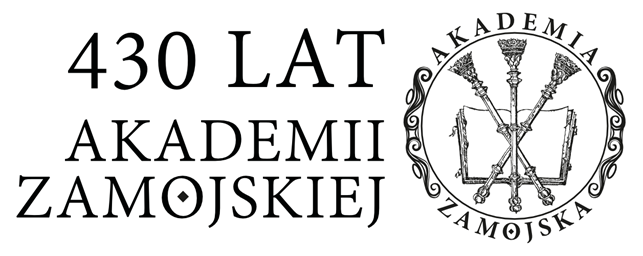Berry, M.J.A., and G. Linoff. 2004. Data Mining Techniques. For Marketing, Sales, and Customer Relationship Management. 2nd ed. Indianapolis, Ind.: Wiley Publishing.
Bishop, C.M. 1995. Neural Networks for Pattern Recognition. Oxford – New York: Clarendon Press; Oxford University Press.
Butcher, K., B. Sparks, and F. O’Callaghan. 2001. “Evaluative and Relational Influences on Service Loyalty.” International Journal of Service Industry Management 12 (3–4): 310–327. doi: 10.1108/09564230110405253.
DOI: https://doi.org/10.1108/09564230110405253
Chen, C.F., M.C. Lai, and C.C. Yeh. 2012. “Forecasting Tourism Demand Based on Empirical Mode Decomposition and Neural Network.” Knowledge-Based Systems 26: 281–287. doi: 10.1016/j.knosys.2011.09.002.
DOI: https://doi.org/10.1016/j.knosys.2011.09.002
Cheverton, P. 2001. Zarządzanie kluczowymi klientami. Jak uzyskać status głównego dostawcy. Translated by E. Mokrzycka. Publikacje Biznesowe. Kraków: “ABC” Oficyna Ekonomiczna. Oddział Polskich Wydawnictw Profesjonalnych.
Claveria, O., and S. Torra. 2014. “Forecasting Tourism Demand to Catalonia: Neural Networks vs. Time Series Models.” Economic Modelling 36: 220–228. doi: 10.1016/j.econmod.2013.09.024.
DOI: https://doi.org/10.1016/j.econmod.2013.09.024
Dick, A., and K. Basu. 1994. “Customer Loyalty: Toward an Integrated Conceptual Framework.” Journal of the Academy of Marketing Science 22 (2): 99–113. doi: 10.1177/0092070394222001.
DOI: https://doi.org/10.1177/0092070394222001
Dudek, A., and I. Michalska-Dudek. 2011. “Model przewidywania lojalności klientów biur podróży z wykorzystaniem sieci neuronowej typu MLP.” Marketing i Rynek 18 (8): 21–29.
Fornell, C., M.D. Johnson, E.W. Anderson, J.S. Cha, and B.E. Bryant. 1996. “The American Customer Satisfaction Index: Nature, Purpose, and Findings.” Journal of Marketing 60 (4): 7–18. doi: 10.2307/1251898.
DOI: https://doi.org/10.1177/002224299606000403
Jacoby, J., and R.W. Chestnut. 1978. Brand Loyalty. Measurement and Management. Wiley Series on Marketing Management. New York: Wiley.
Johnson, M.D., A. Gustafsson, T.W. Andreassen, L. Lervik, and J. Cha. 2001. “The Evolution and Future of National Customer Satisfaction Index Models.” Journal of Economic Psychology 22 (2): 217–245. doi: 10.1016/S0167-4870(01)00030-7.
DOI: https://doi.org/10.1016/S0167-4870(01)00030-7
Kandampully, J., and D. Suhartanto. 2000. “Customer Loyalty in the Hotel Industry: the Role of Customer Satisfaction and Image.” International Journal of Contemporary Hospitality Management 12 (6): 346–351. doi: 10.1108/09596110010342559.
DOI: https://doi.org/10.1108/09596110010342559
Keiningham, T.L., L. Aksoy, and L. Williams. 2009. Why Loyalty Matters. The Groundbreaking Approach to Rediscovering Happiness, Meaning, and Lasting Fulfillment in Your Life and Work. Dallas: BenBella Books.
Kon, S.C., and L.W. Turner. 2005. “Neural Network Forecasting of Tourism Demand.” Tourism Economics 11 (3): 301–328. doi: 10.5367/000000005774353006.
DOI: https://doi.org/10.5367/000000005774353006
Lee, M., and L.F. Cunningham. 2001. “A Cost/Benefit Approach to Understanding Service Loyalty.” Journal of Services Marketing 15 (2): 113–130. doi: 10.1108/08876040110387917.
DOI: https://doi.org/10.1108/08876040110387917
Lee, S., S. Jeon, and D. Kim. 2011. “The Impact of Tour Quality and Tourist Satisfaction on Tourist Loyalty: the Case of Chinese Tourists in Korea.” Tourism Management 32 (5): 1115–1124. doi: 10.1016/j.tourman.2010.09.016.
DOI: https://doi.org/10.1016/j.tourman.2010.09.016
Lu, T.P.J., and E.T.P. Yee. 2001. An Integrated Model of Service Loyalty. Paper read at Academy of Business and Administrative Sciences International Conferences, 2001.07.23–25, at Brussels, Belgium.
Luarn, P., and H.-H. Lin. 2003. “Customer Loyalty Model for E-Service Context.” Journal of Electronic Commerce Research 4 (4): 156–167.
McAlexander, J.H., S.K. Kim, and S.D. Roberts. 2003. “Loyalty: the Influence of Satisfaction and Brand Community Integration.” Journal of Marketing Theory & Practice 11 (4): 1–11.
DOI: https://doi.org/10.1080/10696679.2003.11658504
Michalska-Dudek, I. 2013. “The Implementation of Loyalty Forecast Model in Identifying Key Clients of an Enterprise.” University of Szczecin Scientific Journal Service Management 11 (780): 35–51.
Michalska-Dudek, I. 2014. “Multidimensionality and Determinants of Consumer Loyalty in Tourist Services.” Folia Turistica (33): 83–107.
Michalska-Dudek, I. 2017. Kształtowanie lojalności klientów biur podróży. Monografie i Opracowania / Uniwersytet Ekonomiczny we Wrocławiu. Wrocław: Wydawnictwo Uniwersytetu Ekonomicznego.
DOI: https://doi.org/10.15678/ZNUEK.2018.0976.0405
Oliver, R.L. 1997. Satisfaction. A Behavioral Perspective on the Consumer. New York: McGraw Hill.
Oliver, R.L. 1999. “Whence Consumer Loyalty?” Journal of Marketing 63: 33–44. doi: 10.2307/1252099.
DOI: https://doi.org/10.2307/1252099
Palmer, A., J.J. Montano, and A. Sese. 2006. “Designing an Artificial Neural Network for Forecasting Tourism Time Series.” Tourism Management 27 (5): 781–790. doi: 10.1016/j.tourman.2005.05.006.
DOI: https://doi.org/10.1016/j.tourman.2005.05.006
Reichheld, F.F. 2006. The Ultimate Question. Driving Good Profits and True Growth. Boston, Mass.: Harvard Business School.
Ripley, B.D. 1996. Pattern Recognition and Neural Networks. Cambridge – New York: Cambridge University Press.
DOI: https://doi.org/10.1017/CBO9780511812651
Rosenblatt, F. 1958. “The Perceptron — a Probabilistic Model for Information-Storage and Organization in the Brain.” Psychological Review 65 (6): 386–408. doi: 10.1037/h0042519.
DOI: https://doi.org/10.1037/h0042519
Zins, A.H. 2001. “Relative Attitudes and Commitment in Customer Loyalty Models — Some Experiences in the Commercial Airline Industry.” International Journal of Service Industry Management 12 (3–4): 269–294. doi: 10.1108/Eum0000000005521.
DOI: https://doi.org/10.1108/EUM0000000005521



 English
English
 Język Polski
Język Polski




